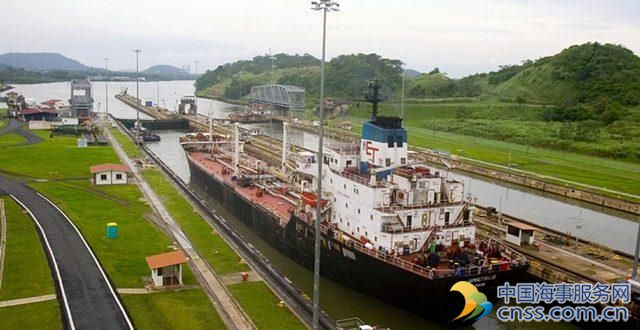The new Panama Canal could trigger Panamax extinction

Ironically so, the new expanded and widened Panama Canal could mean that the ever popular Panamax size segment is faced with the threat of extinction. In its latest report, Allied Shipbroking noted on the new Panama Canal that “being one of the most vital passage ways in shipping, it is set to create a real shake up in several shipping sectors, while current trade patterns might also be set to change”.
Allied’s George Lazaridis, Head of Market Research & Asset Valuations noted that “the Panama Canal as it stood before the expansion was a passage way mainly utilised by containerships. Its restrictions had meant that certain size groups enjoyed an artificially supplied demand which will be now under considerable pressure. Over the past years containerships have been noting a significant structural change, with the main line operators undertaking a massive expansion program looking to better utilise their existing operating fleet in a better structure and adding a massive amount of ever larger vessels in order to create massive cuts on the cost of shipping a container around the world.
According to Lazaridis, “this aggressive competition amongst the operators has meant that a large portion of older vessels owned by independent owners have become ever more squeezed by the “cascading effect” that has been undertaken with the larger size segments squeezing market share from each respective size segment below and as such leaving some size group with hardly any market to operate in and in turn an excessive amount of tonnage supply that needs to be retired sooner then its original investment horizon. Panamax vessels have been the size that has felt the biggest brunt of this force, being a size group that is no longer offering the best economies of scale, while too big (and gearless) to be able to be shifted easily in smaller developing trade routes. Up until now they have had some small protection from the fact that they were the best suited to fully utilize trade routes which passed through the Panama Canal, as such allowing them a small market share which was their domain and could not be shifted to any other larger size segment”.
Allied’s analyst went on to note that “this obviously will be under change now, as the Neo-Panamax vessels will be the ones that will quickly replace these vessels on these routes, creating a rapid shrinking on the available markets where the old Panamaxes will still be in demand and will be used. Beyond this, the new Panama Canal is expected to create a shake-up in other sectors as well as it reduces costs for other commodities in the market”.
Meanwhile, “the LNG trade is one that has been wildly discussed, with many seeing a huge opening up of US Gulf exports to key Asian markets. The new canal can fully accommodate the typical (cbm rating between 120,000 and 185,000) LNG carrier and as such allowing for their voyage time to be cut by around half. Having said that however, The LNG market is more inflexible, characterised by its very long term charter hires, as such it will likely only bring about a slight increase in interest in the spot market where vessels will likely be taken up to utilised the price arbitration gap between the U.S. market and that of the Far East only as far as the excess import capacity of the Far Eastern markets allow. To a lesser extent we will see some disruptions in the tanker and even less so in the dry bulker trade matrices. These disruptions will focus on exports from the U.S. Atlantic coast and the areas of S. America close to the canal, with the expected trade heading towards Far East. This is likely to be seen more so in the LR product tankers, where U.S. refineries could take on the opportunity to increase their market share in the Far East”. Lazaridis concluded.
HEADLINES
- Do shipping markets want Biden or Trump for the win?
- All 18 crew safe after fire on Japanese-owned tanker off Singapore
- Singapore launching $44m co-investment initiative for maritime tech start-ups
- Cosco debuts Global Shipping Industry Chain Cooperation Initiative
- US warns of more shipping sanctions
- China continues seaport consolidation as Dalian offer goes unconditional